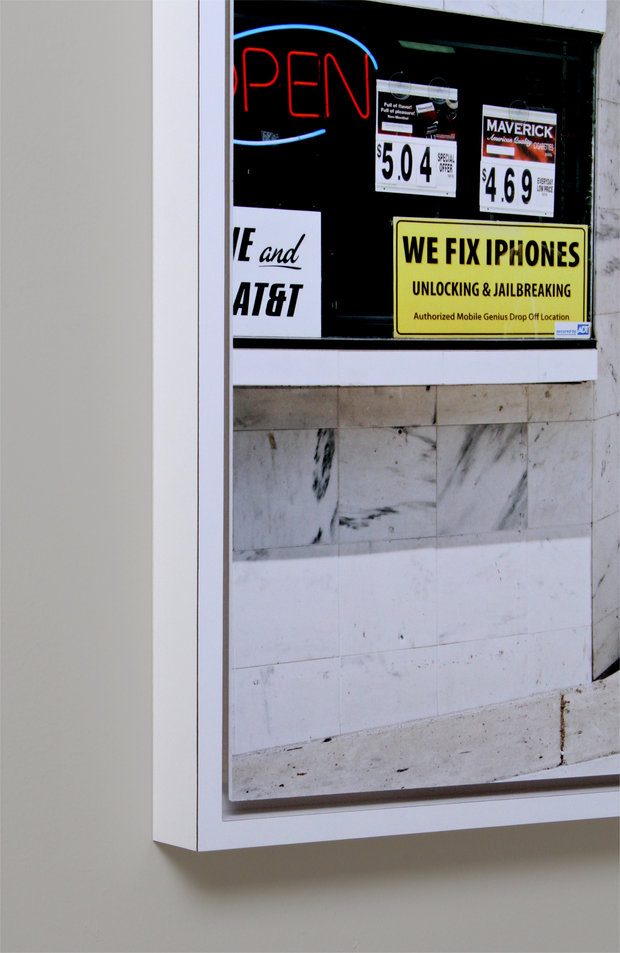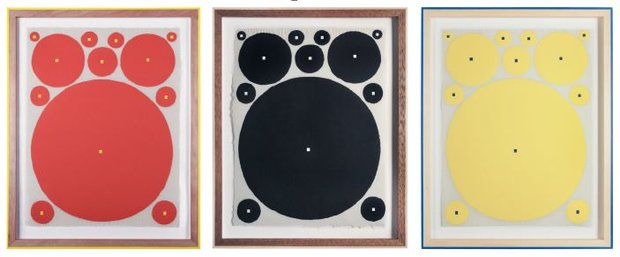One of the most compelling aspects of designing frames at Bark is that our designers get to work with living artists—both established and emerging—to design frames that present their work in the best possible way, as well as protect it from an environment that can be harsh for art materials.
And we can share with artists our deep experience in designing frames that present an artist’s work in the best light. The first question for our designers in working with artists is: What’s best for the art? Frame designer S.E. Nash, who has worked at Bark for five years, sat down with Marketing Specialist Jennifer Clark to delve further into the topic of working with living artists.
Jennifer Clark: First off, how do you approach framing the work of artists in general?
S.E. Nash: If we receive a work of art to frame and the artist is no longer alive, research is done to find out what kind of frames the artist used on his/her own works, and an attempt is often made to create a frame that is derived from that style.
JC: How do things change when working with a living artist?
SN: Working directly with artists is compelling for a variety of reasons. For one, I am an artist myself and enjoy treating frame design as an extension of artistic practice. The way we work at Bark to conceive, design, and craft frames for artists goes in tandem with an artist’s idea of their work and how it should be presented. It can be an immensely creative and informative process, for the frame designer and the artist. Artists are almost always interested in knowing the technical details of framing. As a result, frame designs for artists can be very inventive and challenging (which makes the whole process more fun).
Over the years I have worked here I have been introduced to the work of many artists and their various frame preferences. Some may want natural materials and hardwoods with basic finishes to reflect the piece, others may want unconventional matting colors, and some might want the frame to be consistent with a larger museum or gallery installation. We try to envision the entire scope of the artist’s immediate project, and with enough foresight, we think about an artist’s trajectory with regard to framing. Should different bodies of work have different frame styles? How lasting is the design? Of course, styles and trends always change (this too includes framing), but as preservation framers we are constantly researching the best materials and conservation practices to put them to practice in our frame designs. Preservation and best practices can influence frame design, but we work to happily marry preservation and aesthetics.
We have framed the work of many artists of my generation, including colleagues of mine from graduate school. Framing the work of contemporary artists is a legacy of the company. Jed [Bark, President of Bark Frameworks] started framing in New York by way of his own artistic career and his acknowledgement of the shortcomings of frame design in the 70s. Being able to offer artists frames that matched the vision of their work was a new proposition. Bark designers have had the opportunity to work with numerous established living artists, including: Jasper Johns, James Siena, Joel Shapiro, Brice Marden, Mel Bochner, Roni Horn, and Gregory Crewdson.

John Lehr, Untitled (2012), ed. 1 of 5, with a Bark-designed Formica float frame.
JC: Do most artists gravitate towards the same style or type of frame?
SN: There is no singular style of frame artists consistently pick. Some choose to create a variation on the aesthetically minimal “stem frame” (often called a “gallery frame”) to display their work – this is a style of the frame that Bark developed in the early 70s. These frames have a simple profile, are thin and usually light-colored, and almost “disappear” visually, leaving the viewer to focus on the work of art and not the frame. Other times, artists and Bark designers collaborate to create frames with specific characteristics, unusual dimensions, or profiles made out of exotic materials that are designed to create specific references and visual cues for the viewer. These designs usually require detailed drawings, which I make in Adobe Illustrator. Our woodshop and preservation teams then work to physically create the design, which may require special woodworking, finishes, and hinging or attachment methods.
Photographer John Lehr was a colleague of mine at Yale, and I recently had the opportunity to work with him to design frames for a new series of his photographs. Lehr chose to use a float frame faced with Formica laminate, which has specific significance as a prefab housing material. The Formica face was sink-cut and shows no miters on the face. The top and bottom show the edge of the Formica material, but otherwise it is camouflaged as a familiar white frame for a painting. While it isn’t unheard of to use Formica in framing, this use of it was new and inventive.
Its final simplicity hides the fact that it is somewhat tricky to work with on a small frame. The frame reflects the architecture and lines in John’s work, and it becomes a part of the finished piece as a result.

John Lehr, Untitled (2012), ed. 1 of 5. Detail of Formica frame/corner.
In 2012, I worked with James Siena on an edition he did for Dieu Donne Papermill. I suggested the use of sintra PVC plastic as a colorful inlay element in simple stem frames of three different hardwood species. Working with James is always a joy, he is a natural frame designer and knows mat colors like the back of his hand (he worked in the matting department at Bark in his early days).

James Siena, editions for Dieu Donne (2012). Frames by Bark Frameworks.

James Siena, editions for Dieu Donne (2012). Detail of frame by Bark Frameworks.
JC: Besides being able to craft a frame exactly as the artist envisions it for his/her work, are there any other benefits to artists in working with us?
SN: Bark designers provide a valuable service to artists by educating them further on preservation practices, conservation, and how they can keep their art safe and intact for the future. Along those lines, if a Bark designer is working with an artist via the artist’s gallery, the gallery staff often becomes attuned to the artist’s preferences and desire to frame with us to ensure that their work is safe and preserved properly for years to come.
Bark Newsletter, Vol. 2 – June 2014
